The Big One - 100 years later
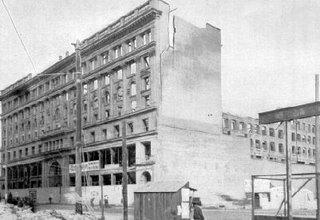
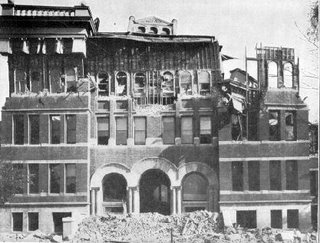
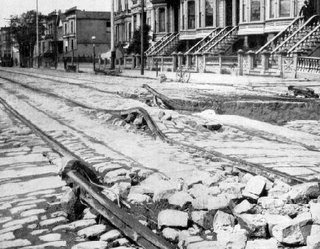
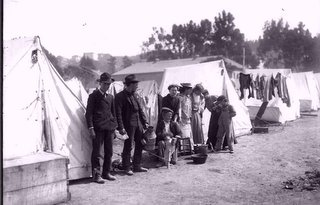

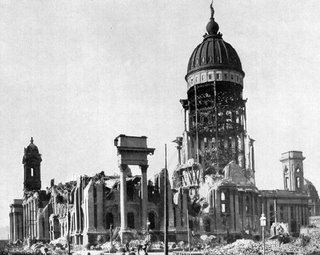
On this date 100 years ago the face of engineering principles was forever altered. The lives of over 3400 ended and millions of others were touched.
In one of the greatest natural disasters ever recorded an earthquake, 8.3 magnitude on the Richter scale, struck San Francisco, know as the Great San Francisco Earthquake of 1906 the foreshock started at 0512 on the morning of April 18, 1906 and intensified about 30 seconds after beginning lasting only 1 - 1 1/2 minutes the quake centered itself in and around San Francisco. The rupture line was 296 miles long. In comparison the rupture line for the earthquake of 1989 in Loma Prieta was only 25 miles.
This mega quake was responsible for killing over 3400 people, destroying over 28,000 buildings and leaving over 225,000 homeless. The pictures above show first the San Francisco City Hall after the quake and subsequent pictures of the tent cities that developed to temporarily house the homeless. The photos also show the buckled streets and tracks for the famous trolley cars. The devastation was massive and the life loss was enormous, but imagine "the big one" striking today, would we be prepared? Would your department be able to handle a disaster of this type?
I know the actions and history of natural disasters aren't directly related to the fire service but our response to these events is of utmost importance to our development as responders and educators. The education of the people results in the construction of earthquake (or more recently hurricane) proof buildings and precautions. We also need to train our responders in basic triage techniques for EMS responses, we need to develop specialized tactical teams to handle the building collapses and Haz Mat teams to handle the potential run offs.
The lessons I have picked up from the 1906 quake are that no matter what has happened and what you plan for, something new is always out there for you to mitigate in the coming and foreseeable future so plan for events that do not fit your Emergency Operations Plan and provide for impromptu decision making.

0 Comments:
Post a Comment
<< Home